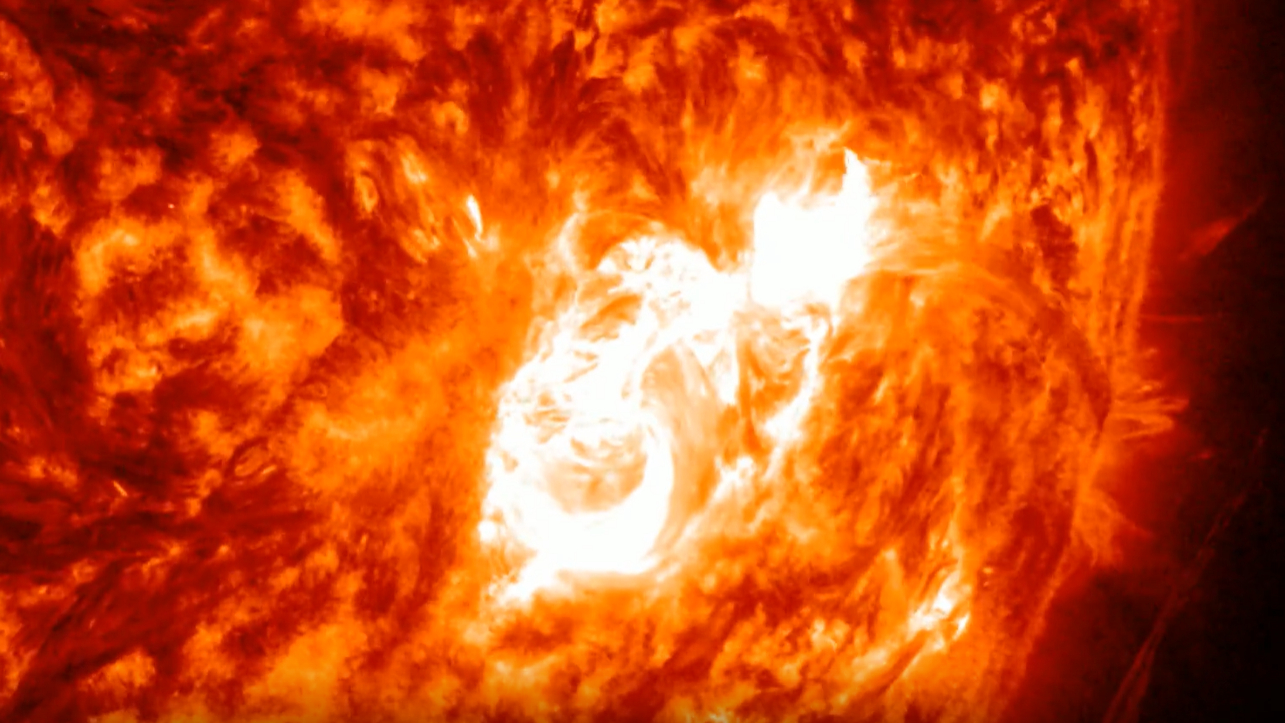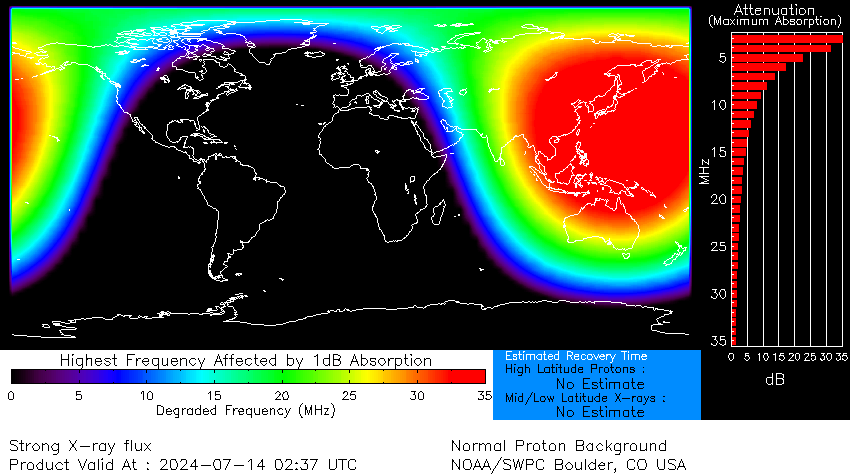
Just as we were beginning to think "The sun has been rather quiet of late," it silences the critics with an explosive X-class flare, the most powerful class of solar flare.
The solar flare from sunspot AR3738 occurred late Saturday night (July 13) at 10:34 p.m. EDT (0234 UT on July 14) and NASA's Solar Dynamics Observatory captured the dynamic scene from space.
Unfortunately for aurora chasers, the short-lived flare did not produce a coronal mass ejection (CME) — a large expulsion of plasma and magnetic field from the sun.
Related: Solar maximum is in sight but when will it arrive (and when will we know)?
Solar physicist Keith Strong has been keeping an eye out for any signs of CMEs from the recent eruptions but according to his recent post on X , "there is unlikely to be any geomagnetic activity as a result of the high solar activity."
CME WATCH - 2024.7.14: I waited until the latest data came in about the time of the X flare and subsequently. There is no sign of any CMEs from the string of M flares and the X2 last night. So there is unlikely to be any geomagnetic activity as a result of the high solar activity pic.twitter.com/OTFRIz1YSqJuly 14, 2024
However, the flare did cause shortwave radio blackouts across Australia, Southeast Asia, and Japan shortly after the eruption. These blackouts are common following powerful solar flares due to the intense bursts of X-rays and extreme ultraviolet radiation emitted during these events.

The radiation from solar flares travels to Earth at the speed of light and ionizes (electrically charges) the upper atmosphere upon arrival. This ionization creates a denser environment for high-frequency shortwave radio signals to pass through, to facilitate communication over long distances. As radio waves interact with electrons in the ionized layers, they lose energy due to increased collisions, which can degrade or completely absorb the radio signals.

Solar flares are eruptions from the sun's surface that release powerful bursts of electromagnetic radiation. These flares occur when the magnetic energy built up in the solar atmosphere is released. They are categorized by size into different classes with X-class flares being the strongest. M-class flares are 10 times less powerful than X-class flares, followed by C-class flares which are 10 times weaker than M-class flares, B-class are 10 times weaker than C-class flares and finally, A-class flares which are 10 times weaker than B-class flares and have no noticeable consequences on Earth. Within each class, numbers from 1-10 (and beyond for X-class flares) describe a flare's relative strength.
The recent solar flare eruption on July 14 clocked in an X-1.27 according to Space Weather Live.







